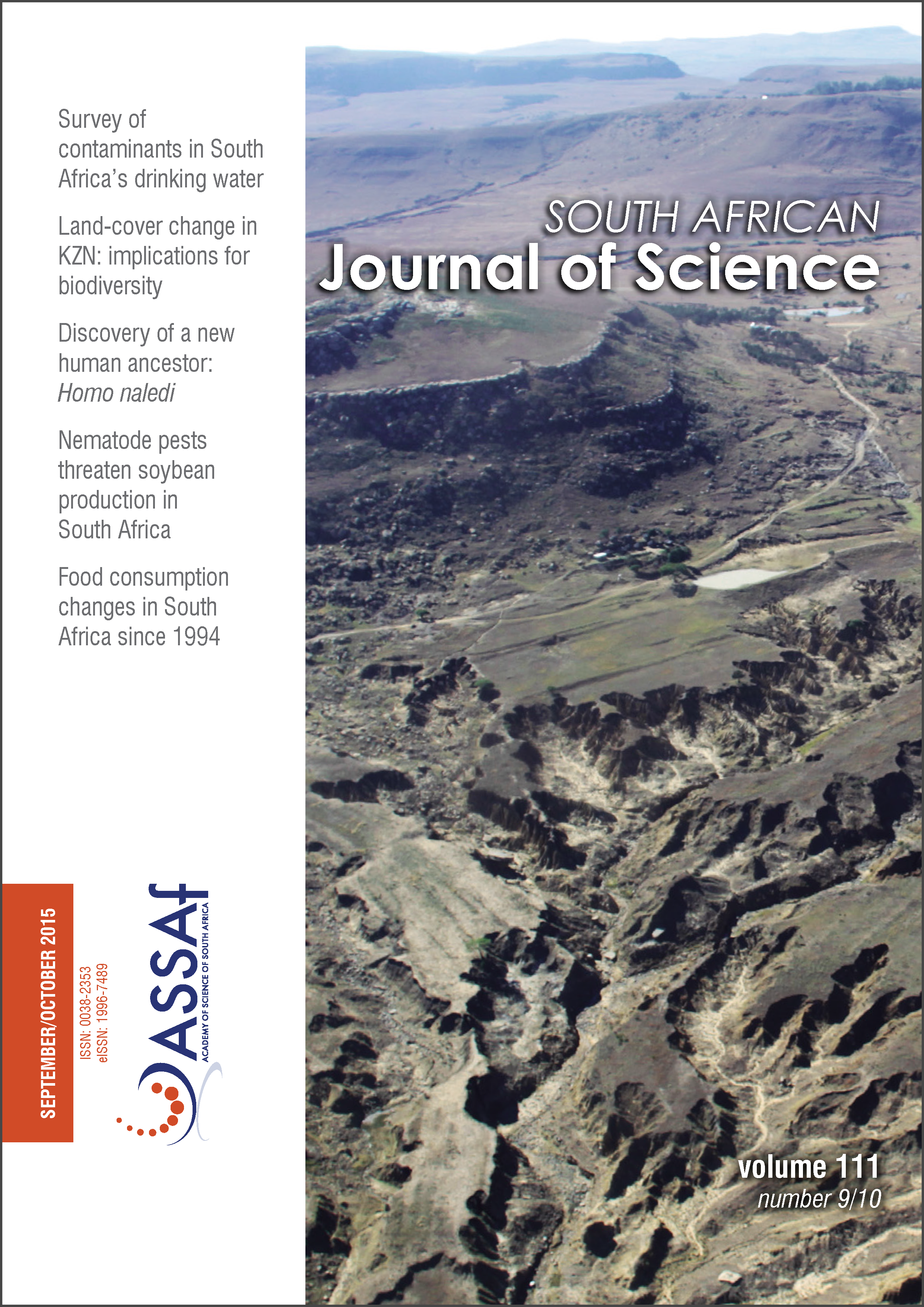An LC-MS/MS based survey of contaminants of emerging concern in drinking water in South Africa
DOI:
https://doi.org/10.17159/sajs.2015/20140401Keywords:
pharmaceuticals, personal care products, mass spectrometry, multiple reaction monitoring, ToxNetAbstract
Advances in many analytical techniques allow the detection of compounds in water at very low concentrations (ng/L), which has facilitated the identification of many compounds in drinking water that went previously undetected. Some of these compounds are contaminants of emerging concern (CECs), which is broadly defined as any chemical or microorganism that is not currently being routinely monitored but has recently been identified as being present in the environment, and that may pose health or ecological risks. CECs can include pharmaceuticals, personal health care products and pesticides. Some CECs can act as endocrine disruptors, interfering with the normal functioning of the human endocrine system, potentially influencing foetal and child development. Although the level of many of these compounds are orders of magnitude below known acute toxicity levels, the health impact of long term exposure at low levels is mostly unknown. In this study, we present the results of a national survey over four seasons of potential CECs in the drinking water of major South African cities. The contaminants most often detected were the related herbicides atrazine and terbuthylazine, and the anticonvulsant and mood-stabilising drug, carbamazepine. The levels of these CECs were well below maximum levels proposed by the World Health Organization and the US Environmental Protection Agency. However, the range of CECs detected in drinking water, and seasonal and geographic variability in CECs levels, warrant a more frequent screening programme.
Downloads
Published
Issue
Section
License

All articles are published under a Creative Commons Attribution 4.0 International Licence
Copyright is retained by the authors. Readers are welcome to reproduce, share and adapt the content without permission provided the source is attributed.
Disclaimer: The publisher and editors accept no responsibility for statements made by the authors
How to Cite
- Abstract 1027
- PDF 744
- EPUB 197
- XML 239
- Supplementary material 4













.png)